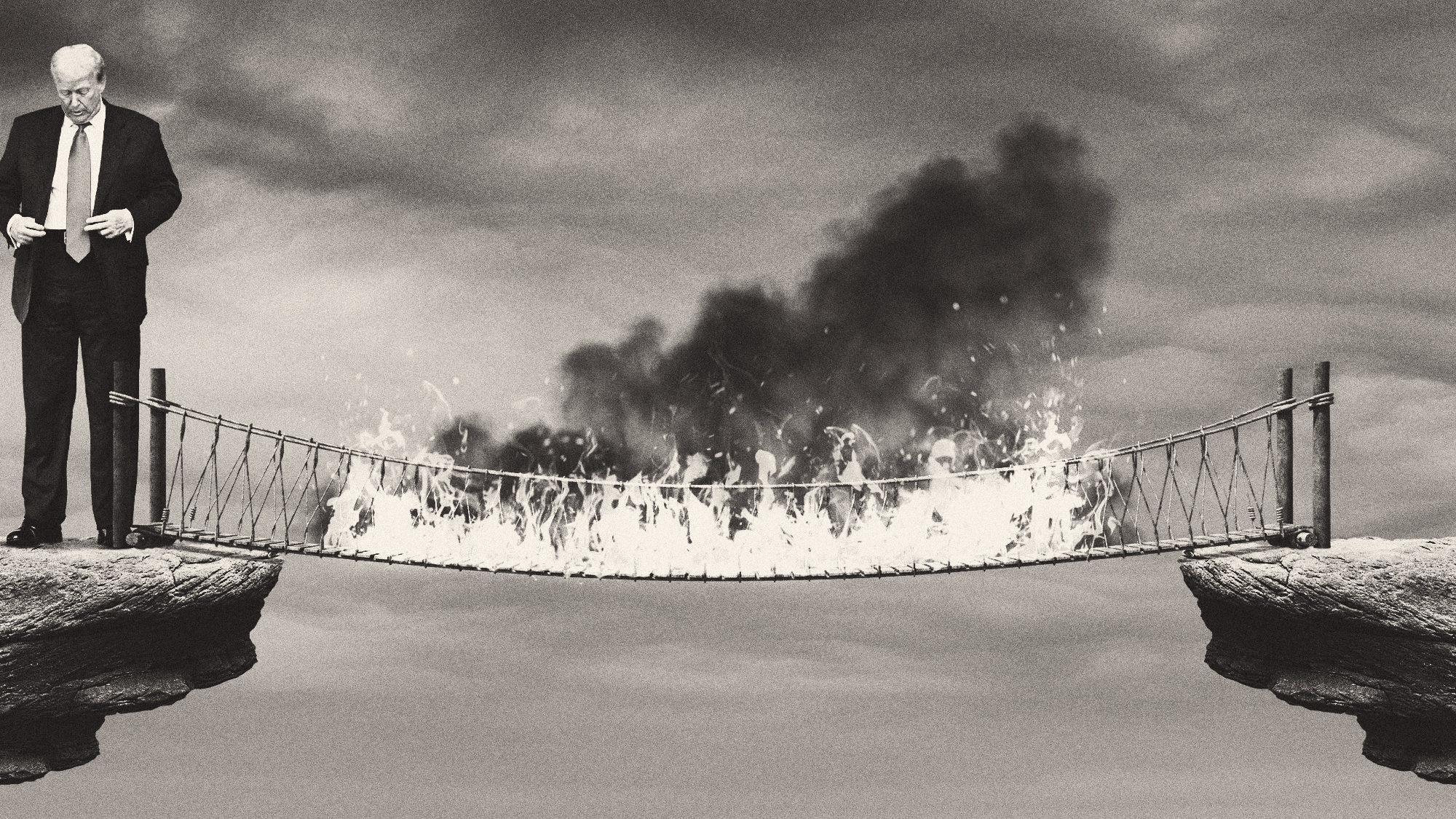The banking crisis: Is nationalization the only way out?
Secretary Timothy Geithner plans to pump $1.5 trillion into failing banks, yet experts say that major U.S. banks already have $2 trillion in bad debt, and future losses in the financial system might raise the amount to as much as $7 trillion.
The U.S. banking system is in “a death spiral,” said Matthew Richardson and Nouriel Roubini in The Washington Post, and only an “all-out government takeover” can prevent a complete collapse. Economists and banking experts are starting to whisper that Treasury Secretary Timothy Geithner’s latest bailout plan, to pump $1.5 trillion into failing banks, is too little, too late. The International Money Fund, Goldman Sachs, and other financial experts estimate that leading U.S. banks already have $2 trillion in bad debt from the subprime mortgage collapse. As the recession spreads through the economy like a malignancy, bank assets are losing value, and other loans are going sour, including commercial real estate loans, credit card debt, and millions of additional mortgages. All told, the financial system is facing possible total losses of $7 trillion. As free-market economists, we normally take a dim view of government intervention. But with the banks “effectively insolvent,” we’ve concluded that the only viable solution is nationalization.
Many banking experts are coming to the same conclusion, said Steve Lohr in The New York Times. The nation’s 50 largest banks “are dead men walking,” with potential losses far larger than their assets. “When I talk to experts,” said Simon Johnson, a banking analyst at the Sloan School of Business at M.I.T., “after about two minutes they say, ‘We should just nationalize.’ That tells me that the consensus is moving in that direction, and we are all afraid to say it.” Nationalization may be a drastic step, said Martin Wolf in the Financial Times, but Geithner and President Obama are making a terrible mistake in throwing more money at the crisis and “hoping for the best.” It’s far more sensible for the government to take a majority stake in the banks worth saving. It could then sell off the bad debt and restructure the banks to the point at which private investors would feel confident enough to start putting capital back in. As the banks regained healthy balance sheets, Washington would sell down its stake. Some critics, including Geithner, insist that the government can’t manage assets well. But Sweden used nationalization to save its banking system in 1992.
Obama, unfortunately, is following Japan’s example, said Rich Lowry in National Review. During their own economic crisis in the 1990s, the Japanese government infused massive amounts of money into “zombie banks,” which were already basically kaput, to keep them afloat. All it got in return was “a ‘lost decade’ of economic stagnation.” That’s what could await us if Obama doesn’t “take the painful, risky step of letting some of the big, irreparably wounded financial players go down.”
The Week
Escape your echo chamber. Get the facts behind the news, plus analysis from multiple perspectives.

Sign up for The Week's Free Newsletters
From our morning news briefing to a weekly Good News Newsletter, get the best of The Week delivered directly to your inbox.
From our morning news briefing to a weekly Good News Newsletter, get the best of The Week delivered directly to your inbox.
Do you really understand what nationalization would mean? said Jim Cramer in New York. Under nationalization, every bank would write down its bad loans, and the government would “create a so-called bad bank to buy up those loans on the cheap.” That would cost taxpayers “5, 6, maybe 7 trillion dollars.” Our debt-ridden nation can’t afford to swallow another $7 trillion. Geithner’s plan is far preferable. It “allows the worst banks to go under while distributing the cost of saving the rest among taxpayers and private investors.” True, Geithner hasn’t offered many specifics. But give him a chance to “flesh out the details in the next few weeks and marshal the forces to get it through Congress.” If he fails, then, okay—we’ll put the banks in the capable hands of “the same people who manage Amtrak and the Postal Service.”
A free daily email with the biggest news stories of the day – and the best features from TheWeek.com
-
 Did Trump just end the US-Europe alliance?
Did Trump just end the US-Europe alliance?Today's Big Question New US national security policy drops ‘grenade’ on Europe and should serve as ‘the mother of all wake-up calls’
-
 How the War Department became the Department of Defense – and back again
How the War Department became the Department of Defense – and back againIn Depth In 1947 President Harry Truman restructured the US military establishment, breaking with naming tradition
-
 Codeword: December 8, 2025
Codeword: December 8, 2025The daily codeword puzzle from The Week
-
Obama: Did he damage his credibility over Syria?
feature With a “slip of the tongue” Secretary of State John Kerry may have not only averted war, but also saved the Obama presidency.
-
Syria: Is a ‘shot across the bow’ enough?
feature The U.S. response to Bashar al-Assad's use of sarin gas must be painful enough to serve as a true deterrent.
-
Rand Paul: What did he achieve with his filibuster?
feature The GOP senator's 13-hour talking filibuster pushed the administration to clarify its drone policy.
-
The military: Do women belong in combat?
feature Defense Secretary Leon Panetta announced his decision to end the long-standing ban on female troops serving in combat roles.
-
Iraq: What was gained, what was lost
feature President Obama declared an end to the war in Iraq and welcomed home soldiers at Fort Bragg.
-
Iraq: Is it a mistake to bring home U.S. troops?
feature Iraq's stability is extremely fragile, and the possibility of renewed conflict among Sunnis, Shiites, and Kurds is all too real.
-
Terrorists in court: What did the Ghailani verdict prove?
feature Al Qaida operative Ahmed Ghailani was convicted of one charge—out of a total of 285 charges—for his part in the 1998 U.S. Embassy bombings in Africa.
-
The Catholic Church: A crisis of confidence
feature Was the pope complicit in covering up sexual abuse scandals when he served as a cardinal and an archbishop?